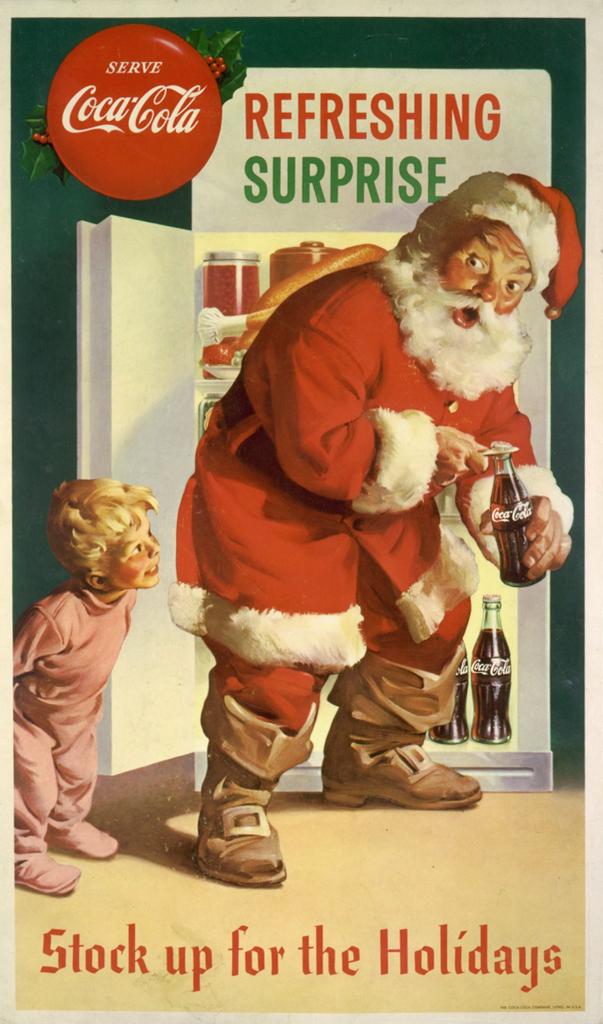Chapter 2: Classicism and Heartbreak
What is a classic? Classic novel? Classic movie? Classic car? Classic rock ‘n Roll? Classic art? ESPN classic? … Classic Coke?
 |
| Coca Cola Co. (ca. 1940). Refreshing Surprise. |
Generally, the word classic refers to time and excellence. A classic era. A classic example of a genre. Classic can also designate art linked to a sophisticated, privileged social group. Some folks resist “classical” forms, feeling patronized by elitist traditions. This week, we look at some classical traditions, classical Greek art, and its revival in the Renaissance. We’ll also look at literary forms with long-lasting influence that could be called classical.
Classic: a term used to describe both an aesthetic attitude and an artistic tradition. The artistic tradition refers to the classical antiquity of Greece and Rome, its art, literature and criticism. … Its aesthetic use suggests … clarity, order, balance, unity, symmetry, and dignity (Classicism).
To make sense of all of this, we need to distinguish between closely linked, but distinct terms (classicism, classic, and classical):
- Classic: a work … first-rate or excellent of its kind, fit to be used as a model or imitated
- Classical: works of Greek and Roman antiquity—“the classics”
- Classicism: a critical position [preferring] harmony, proportion, balance, decorum, and restraint; deploring less regulated products of the Vernacular modern literatures
As an attitude, Classicism honors an idea of a golden past, disparaging later, contemporary traditions (classicism, classic, and classical). Holberton describes classicism as a “commitment to a canonical art of the past or its values, in particular the art of Antiquity.” He identifies “order, proportion, balance, harmony, decorum, and avoidance of excess” as values common to classicist attitudes. Classicism is often held to contrast with “romantic values, … individualism, spontaneity, and inspiration” (classicism, classic, and classical).
Classicism: General Preferences
- A style valued persistently over time
- Emulation of a venerated past, a golden era
- Association with a social elite that imposes it values in an ideal of refined elegance
- A standard of excellence associated with order and harmony
References
Classicism, classic, and classical [Article]. (2012). In Birch, D., & Hooper, K. (Eds.), The Concise Oxford Companion to English Literature. Oxford University Press. Retrieved from https://www-oxfordreference-com.ezproxy.bethel.edu/view/10.1093/acref/9780199608218.001.0001/acref-9780199608218-e-1603?rskey=qdR2E4&result=6.
Classicism [Article]. (2014). In Philip’s World Encyclopedia. Retrieved from https://www.oxfordreference.com/view/10.1093/acref/9780199546091.001.0001/acref-9780199546091-e-2507.
Coca Cola Co. (ca. 1940). Refreshing Surprise. [Advertisement]. Retrieved from https://library-artstor-org.ezproxy.bethel.edu/asset/LOCEON_1039795403.
Holberton. P. (2001). “Classicism.” Brigstocke, H. [Ed.]. The Oxford Companion to Western Art. Oxford University Press. Retrieved from https://www.oxfordreference.com/view/10.1093/acref/9780198662037.001.0001/acref-9780198662037-e-563.
a term used to describe both an aesthetic attitude and an artistic tradition. The artistic tradition refers to the classical antiquity of Greece and Rome, its art, literature and criticism. As aesthetic valuing clarity, order, balance, unity, symmetry, and dignity (Classicism).
in the Euro-American tradition, a reference to the works, styles, and themes of Greek and Roman antiquity. More generally, an aesthetic valuing clarity, order, balance, unity, symmetry, and dignity, usually honoring a cultural tradition associated with some golden age of the past.
associated with a social elite, a preference for the harmony, proportion, balance, decorum, and restraint of a venerated past era; rejection of less regulated vernacular, folk-oriented arts (Classicism). Often contrasted with “romantic values, … individualism, spontaneity, and inspiration” (classicism, classic, and classical).
language and culture associated with broad, often less educated folk culture. E.g. pop vs. classical music.
